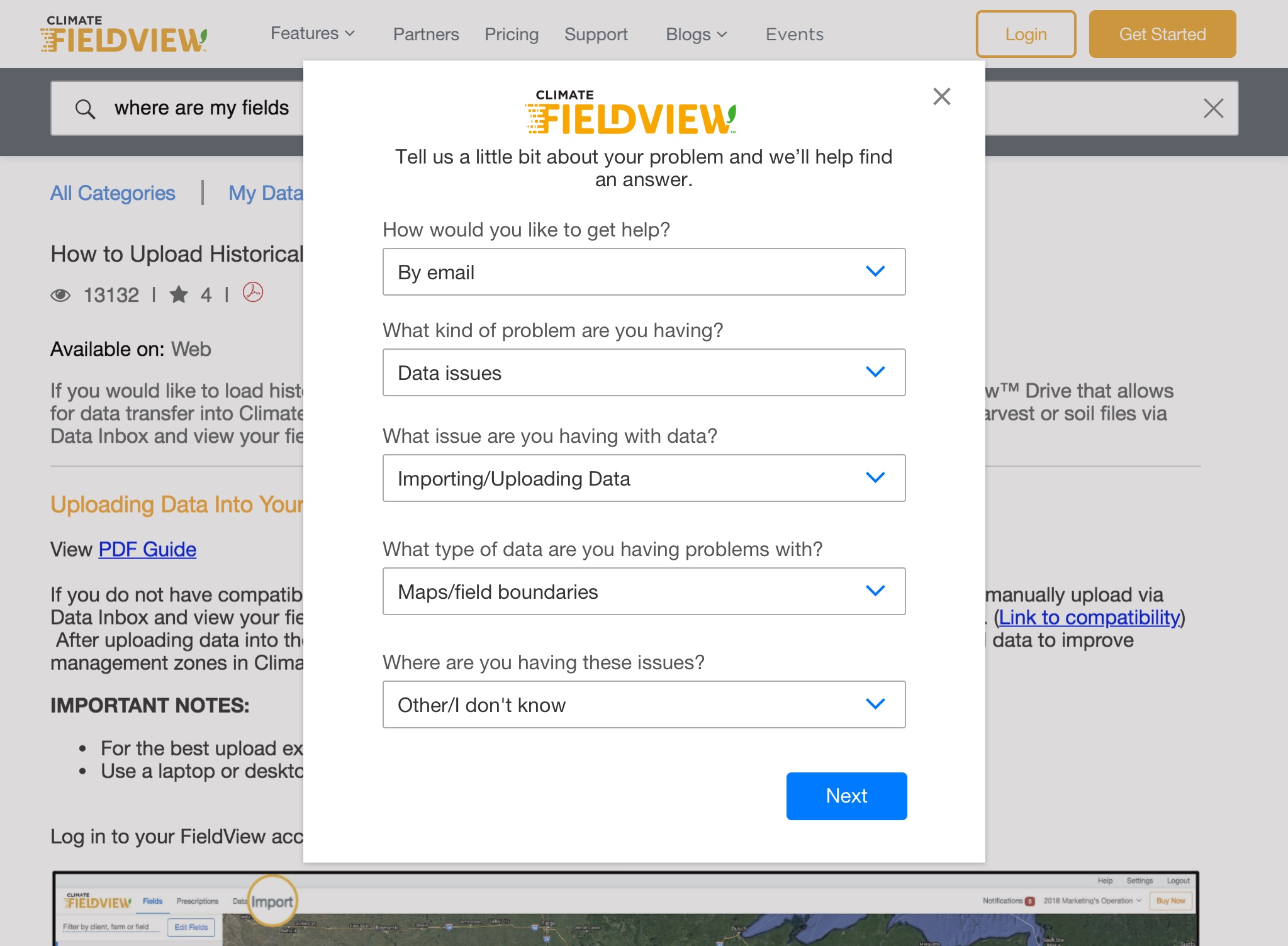
Support Center Service Design
The Support Center is the Climate Corporation's help site. This project details two versions of the site that I worked on. The first version was just to get a working support page up. The second version was to create a unified customer support experience.


Define
At the time the company worked in silos; a major part of the project was getting people bought-in to the concept, and putting on a workshop to generate ideas.
The Team: Product Design & Acting PM (me), Full Stack Engineer, Business Analyst, Two Support Leads, Support Center lead, Operations Lead, Marketing Lead.
The Challenge: After setting up the support site initially, I monitored some key metrics on usage of the site. I found that utilization was quite high, but so were bounce rates and calls into our support hotline. I started to put together a plan to unify the customer support experience. This was my first foray into service design. As a part of this initiative, I took a Service Design Immersive class from Cooper.
I started this project by trying to understand our fragmented support ecosystem. The company had 2 different teams to answer support calls, 1 team for escalated issues, a team that works on creating support articles, a marketing team that puts on help events, and sales associates that field hundreds of calls from their customers a week. Those teams were not coordinating the customer experience, and as a result, customers were having a hard time understanding how to get help, and the company was spending tons of money answering the same questions over and over again.

Discover
After talking to each of the departments involved, I put together a basic journey map to catalogue the customer support journey. I gathered all of the team leads and got their feedback on the customer journey; they all agreed that there was a need to streamline and improve the customer support experience.
Once we had buy in from everyone, we worked together to identify the primary opportunities for improving the experience and saving the company money.
After some iterations, we agreed upon a process to tie help/support cases to customer actions. If someone did not complete the core action that they had tried to perform, we would proactively follow up with them and provide materials to them to help solve their problem.

Design
The physical design felt like the easy part. The harder part of designing this experience was driving alignment, getting the teams to agree to workflows, and driving institutional change.
We decided that version 1 of the project would focus on creating a support ticket within the product, saving back and forth between customer/support during the information gathering phase. At the same time, we would recommend articles to users as they were telling us what type of problems they were having. We decided that proactive messaging could be implemented later. I focused on putting together some rough wireframes. At the same time, I worked with the leads to figure out how the data should be structured, what questions we needed growers to answer, and how we were going to identify core actions and track metrics. Once we agreed on how we would structure the data, I worked with a user researcher to start to set up card sorting exercises, to make sure that our proposal made sense to users.
Delivery and Next Steps
Before the project was complete, I was moved to another team/project. I made sure to handoff both the wireframes and the service blueprint to the team. I’ve also been checking in with the team regularly to see what their progress has been.